 I love what I do…seeing people succeed with their weight-loss goals is one of the most rewarding feelings as a dietitian. However, it can also be very challenging when I see clients revert back to old habits and struggle to keep the weight off that they worked so hard to remove. While this is a common struggle for many, there are small steps that you can take to try to prevent this from happening.
I love what I do…seeing people succeed with their weight-loss goals is one of the most rewarding feelings as a dietitian. However, it can also be very challenging when I see clients revert back to old habits and struggle to keep the weight off that they worked so hard to remove. While this is a common struggle for many, there are small steps that you can take to try to prevent this from happening.
I took some time to research the regular habits of people who have been successful in keeping off weight on a regular basis. After checking out some different articles on highly successful dieters, I want to share what I have found to be the best things to keep the weight off for good.
- Keep a food journal. Individuals who keep food logs tend to eat 40 percent less when writing it down as a result of the accountability to themselves. Also, a recent study found women who kept a food journal lost 6 pounds more than those who didn’t. Some excellent online food tracker sites or apps include My Fitness Pal and Lose It!. Try one of these to start keeping a food journal of your intake and habits.
- Practice portion control. As a society, we are terrible at “eyeballing” portions. The secret to success is consistently measuring food items to make sure you are eating the same amount you are journaling. The simplest way to do this is to use measuring utensils to dish out your meals and associate common items with certain portions. For example, a serving of meat should be the size of a deck of cards, a baked potato should be the size of a computer mouse, ½ cup of pasta is the size of a tennis ball, and a teaspoon of oil is the size of one dice. You can also use things like the palm of your hand and your thumb for references.
- Don’t skip meals. Lots of people think if they skip a meal they will be decreasing the total calories they are taking in for the day. In reality, the opposite usually happens. When someone skips a meal, they typically end up overeating at a different time of day to compensate for missing out on the food that their body needed. Also, whenever you skip a meal it makes your metabolism work at a slower rate, and therefore makes it harder to lose weight. Eating balanced meals and snacks throughout the day is the best way to stay on track.
The more you follow these rules, the higher chance of success you will have in keeping off the weight. So once you have hit that goal weight that you have been working so hard to achieve, take these weight management steps to keep it off.
This blog was written by Angie Mitchell, RD, Wellness Coordinator. To find out more about the NIFS bloggers, click here.


 It’s that time of year when millions of people around the world start looking for that next “best” thing to give them the body they have always dreamed of. Aggressive physical challenges, cleanses, elaborate diets that usually involve the removal of a food source (and result in you craving it even more); people will take some drastic steps to help erase the past year of poor nutrition and lifestyle decisions.
It’s that time of year when millions of people around the world start looking for that next “best” thing to give them the body they have always dreamed of. Aggressive physical challenges, cleanses, elaborate diets that usually involve the removal of a food source (and result in you craving it even more); people will take some drastic steps to help erase the past year of poor nutrition and lifestyle decisions.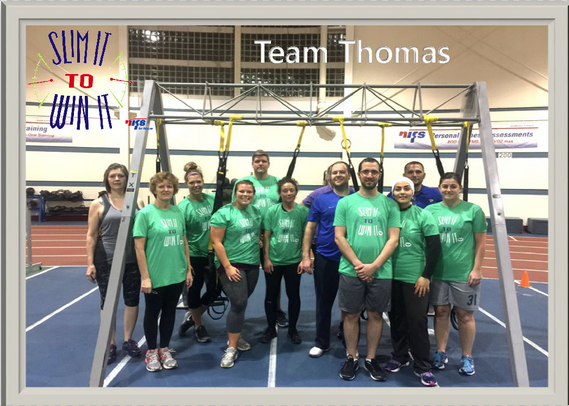 Not Too Easy to Quit
Not Too Easy to Quit
 After the feasting season (Halloween to Christmas) comes the New Year, and for a lot of people this means a resolution. Most people make resolutions to start weight loss, work out more, eat better, and so on; but typically it is some sort of goal to start off the New Year on a healthier note. If you are hoping to have a healthier year, I have some suggestions that will help jump-start your January.
After the feasting season (Halloween to Christmas) comes the New Year, and for a lot of people this means a resolution. Most people make resolutions to start weight loss, work out more, eat better, and so on; but typically it is some sort of goal to start off the New Year on a healthier note. If you are hoping to have a healthier year, I have some suggestions that will help jump-start your January. Winter is officialy here. With temperatures getting colder and the weather conditions more temperamental, it’s important to plan ahead to stay on top of your wellness goals. Distractions are inevitable during the holidays, but anticipating them and reacting accordingly will set you apart from most individuals during this season. See our tips below to help combat being sidelined this season
Winter is officialy here. With temperatures getting colder and the weather conditions more temperamental, it’s important to plan ahead to stay on top of your wellness goals. Distractions are inevitable during the holidays, but anticipating them and reacting accordingly will set you apart from most individuals during this season. See our tips below to help combat being sidelined this season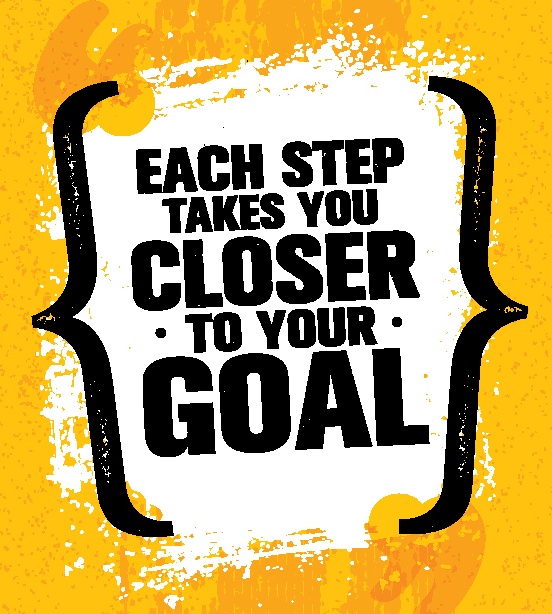 Some people in this world are really good at staying committed to something they have started, but there are many others who struggle with meeting a goal or expectation that they have set for themselves, then actually following through with it to completion. It can be a challenge to hit those markers if you cannot seem to stay committed to something, which in turn leads to discouragement, a sense of failure, and feeling defeated.
Some people in this world are really good at staying committed to something they have started, but there are many others who struggle with meeting a goal or expectation that they have set for themselves, then actually following through with it to completion. It can be a challenge to hit those markers if you cannot seem to stay committed to something, which in turn leads to discouragement, a sense of failure, and feeling defeated.
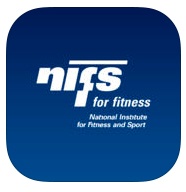 Maybe you have found your favorite app to log your workouts, whatever that may be; using a phone makes it so much easier than logging it into a notebook. If you haven’t taken time, download the NIFS app and enjoy many benefits aside from the ones that are listed above. Some of those include: using your phone to scan in at the desk, monthly challenges with great prizes, setting goals, logging workouts, utilizing deals and finding out extra things that may be going on at NIFS, and receive push notifications for important updates!
Maybe you have found your favorite app to log your workouts, whatever that may be; using a phone makes it so much easier than logging it into a notebook. If you haven’t taken time, download the NIFS app and enjoy many benefits aside from the ones that are listed above. Some of those include: using your phone to scan in at the desk, monthly challenges with great prizes, setting goals, logging workouts, utilizing deals and finding out extra things that may be going on at NIFS, and receive push notifications for important updates!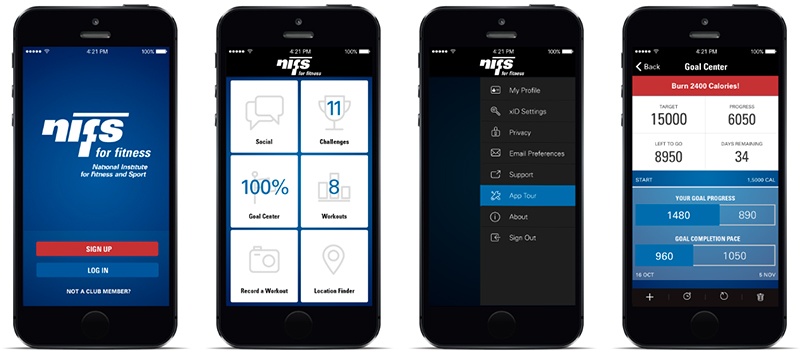
 “Our mindset” refers to every individual who has ever had one slice of pizza too many and subsequently tortured themselves on the treadmill because of it. Exercise is not punishment and should not be viewed as such. If you consistently and begrudgingly plan your workout routine around your indulgences, fitness becomes an irrational afterthought. A healthy lifestyle includes both enjoying the sweeter (or more savory) things in life, as well as enjoying a sweat session for the benefits of fitness. Your body is built to be listened to, and practicing a balanced lifestyle will help you reap not only better health, but also performance benefits.
“Our mindset” refers to every individual who has ever had one slice of pizza too many and subsequently tortured themselves on the treadmill because of it. Exercise is not punishment and should not be viewed as such. If you consistently and begrudgingly plan your workout routine around your indulgences, fitness becomes an irrational afterthought. A healthy lifestyle includes both enjoying the sweeter (or more savory) things in life, as well as enjoying a sweat session for the benefits of fitness. Your body is built to be listened to, and practicing a balanced lifestyle will help you reap not only better health, but also performance benefits. With busy class schedules, homework, exams to study for and papers to write, not to mention wanting to have something of a social life, trying to stay fit in college can really be a challenge. On top of this, many students hold some form of a job where they work between 10 and 25 hours on any given week. Whether you are an undergrad or graduate student, the same thing applies. When all this stuff is on your plate and the schedule continues to fill up, one of the first things that tends to get pushed to the side is getting to the gym!
With busy class schedules, homework, exams to study for and papers to write, not to mention wanting to have something of a social life, trying to stay fit in college can really be a challenge. On top of this, many students hold some form of a job where they work between 10 and 25 hours on any given week. Whether you are an undergrad or graduate student, the same thing applies. When all this stuff is on your plate and the schedule continues to fill up, one of the first things that tends to get pushed to the side is getting to the gym!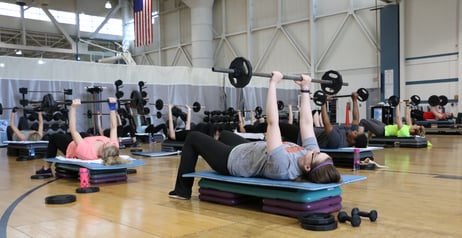
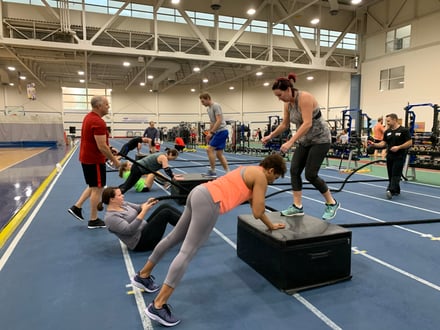

 Who would you recommend this training program for?
Who would you recommend this training program for?